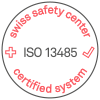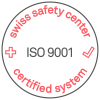When it comes to the development of medical products, agility has long been a major concern for medtech companies, also. The basic assumption is that agility is essentially good. These days, agility seems to come across as just hype.
But when does agility really add value? What does agility mean exactly? What does agility look like in the development of medical products? These are all good questions that we have addressed in the following post.
In the starting block for development – but where should you go, what obstacles are in the way?
The obvious answer is: Yes – agility and methods such as Scrum can be used for the development of medical products; and they make sense for this type of application.
Prerequisite:
- The development must be conducted under the guidance of a QM system. The agile method must not violate the requirements specified by the QM system.
- A risk-based development life cycle and an effective change management system must be defined and implemented.
- The documentation must meet both the requirements of the development team and the applicable regulations. What is not documented was not done!
Agile methods bring some advantages that also add considerable value to the (further) development of medical technology products. The only question is when and for what:
- 100m Sprint: start and finish are clearly defined, the route is 100 meters long and in a straight line. Agility makes little sense here.
- Path, goal, and result are unclear: the project or processes are ready and in the starting block. Detailed information about the path, possible obstacles, and the specific destination can only be discovered after the start and during travel. Therefore, the requirements and conditions may change “continuously”. This is when agility makes sense.
Before the starter pistol sounds, it is important to think about what exactly constitutes the DNA of the company. How will projects or product developments be conducted? How does collaboration happen? Is the leadership ready to discard certain control mechanisms? Is the company ready for a paradigm shift? Unfortunately, one often encounters pseudo-agility – the hype topic of agility is used as a marketing tool, but true agility is never implemented.
Agile development of medical products in compliance with regulatory requirements
Conventional models such as the V-model or the waterfall model should not be demonized; they absolutely have their purpose. However, these methods have one major problem in common: The systematic discovery of errors only occurs in the test phase. So, towards the end of the development cycle. Agile models eliminate this weakness because the agile teams are able to discover challenges and obstacles in the early stages:
- Continuous improvement through retrospectives: The goal is to quickly produce a functional product – often initially referred to as a minimum viable product (MVP). From sprint to sprint, the product is expanded and improved. This allows important stakeholders (e.g., customers, investors, marketing, quality) to review the product at an early stage and provide feedback.
- Good quality assessment through continuous testing: New functions and technologies are regularly tested at an early stage. Therefore, errors and risks can also be identified at an early stage. This leads to a high-quality product – across all iterations.
- Improved risk management: With this iterative approach, new product risks are quickly identified, and the status of previously known risks is continuously updated. This allows the risky functions to be prioritized, managed, and, if necessary, discarded at an early stage (“fail fast”).
- High focus on safety and customer satisfaction since customer feedback can be prioritized and included: The regular exchange and comparison with the “customer” allows the requirements to be closely aligned to their wishes. Of course, the highest priority is the development of a device or product that is safe for the end user and the patient.
We gladly support you
Agile methods can support companies in handling the time pressures of development projects and development loops, in combination with the need for early customer feedback and in compliance with regulatory guidelines.
Find out more in our next post about the requirements which must be met. We can help you with questions about the topic. If you would like to implement agile methods and need support, please do not hesitate to contact us.
We are here for you – send us your request!
Developing together! We put your ideas into practice and accompany your projects until they are ready for the market. Get in touch with our experts now.

